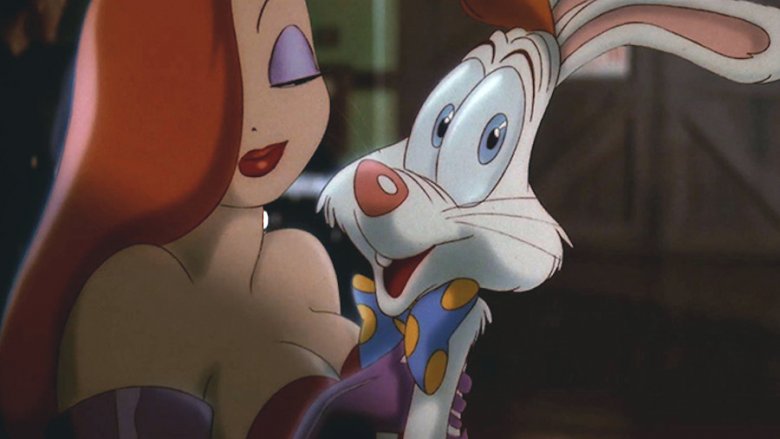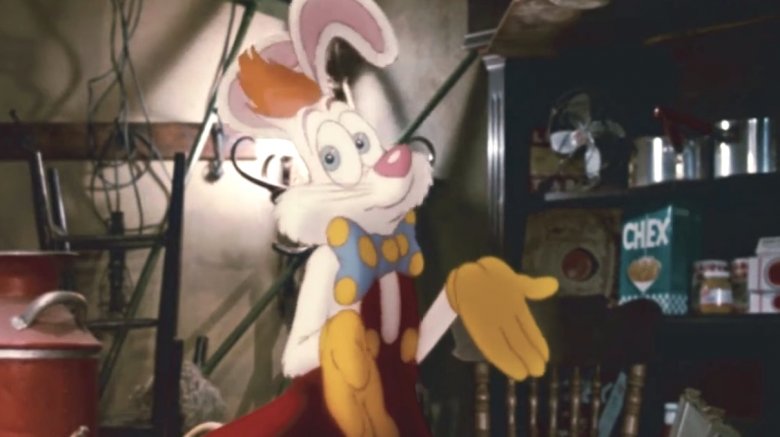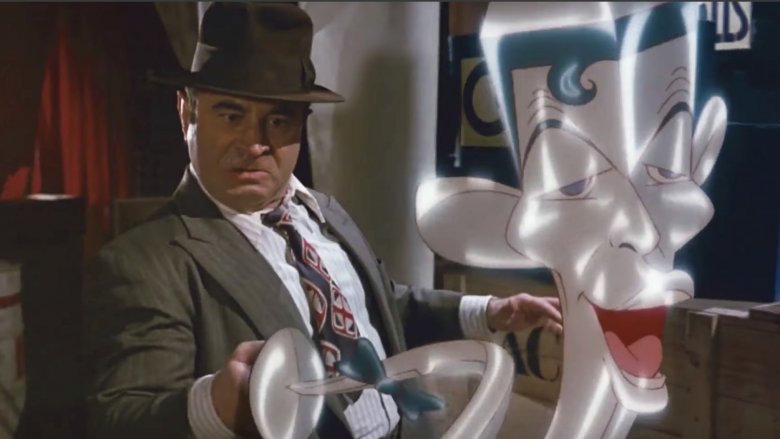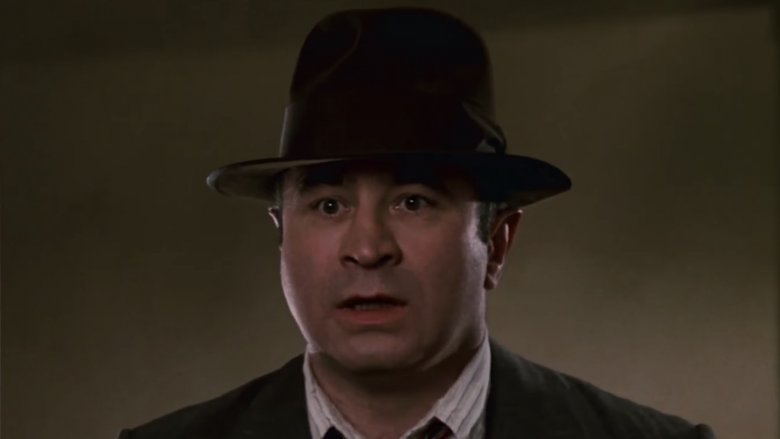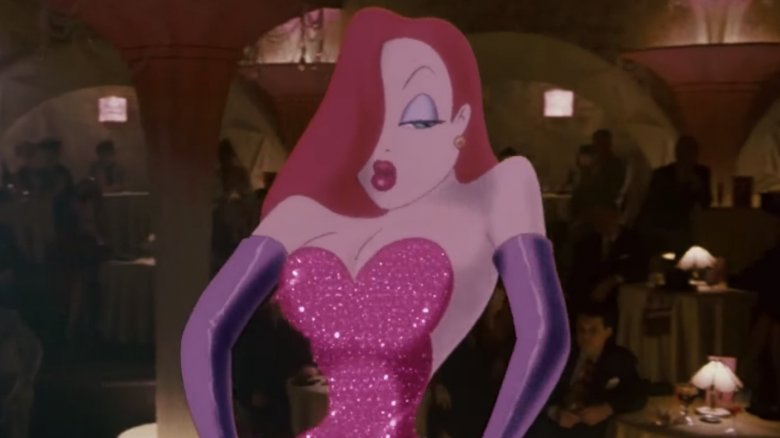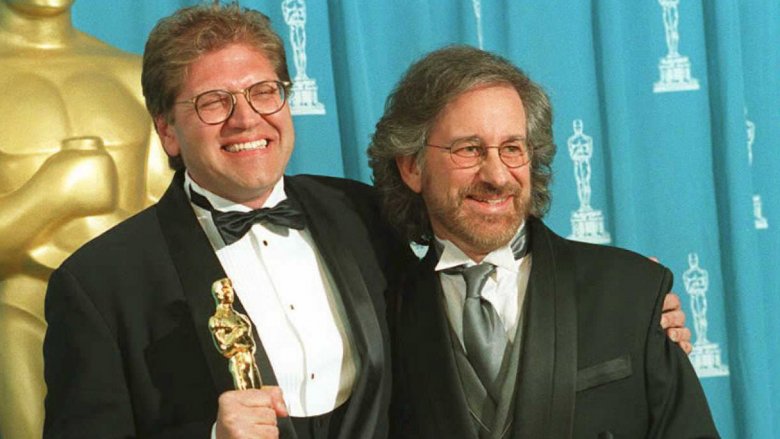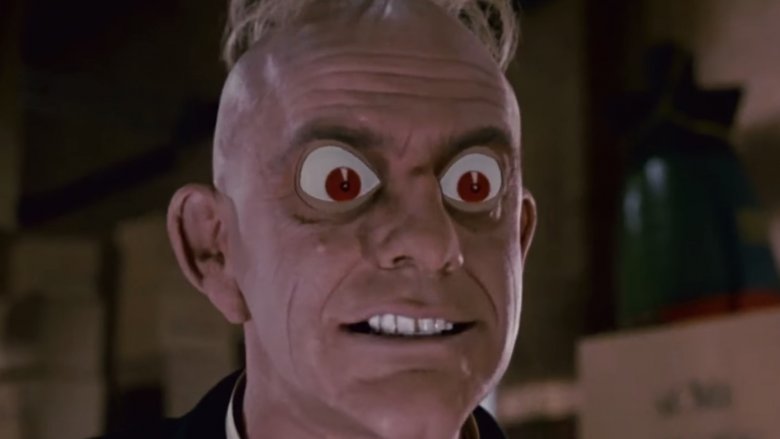Why Who Framed Roger Rabbit Never Got A Sequel
Way back in 1988, Who Framed Roger Rabbit single-handedly raised the big-screen animation game. Based on a cult satirical mystery novel by Gary K. Wolf called Who Censored Roger Rabbit?, the film, directed by Robert Zemeckis, was a dazzling, seamless blend of classic cartoon characters with live-action settings and actors. Set in the 1940s, in scandal-laden Toontown, it gave the culture memorable characters like the wacky and anxious Roger Rabbit, his preposterously attractive wife Jessica, and hard-boiled detective Eddie Valiant. Who Framed Roger Rabbit earned a sprightly $156 million at the domestic box office and took home four Academy Awards. Yet, apart from a handful of short films, the seemingly inevitable Roger Rabbit follow-up never happened. Did sequel plans get "dipped"? Not exactly—but close.
Multiple attempts never got off the ground
Just because a Roger Rabbit sequel never came to pass doesn't mean that people haven't tried. They have—a lot. And, almost every time, the movie never got past the concept or script phase. One version, Toon Platoon, written by Nat Mauldin (The Preacher's Wife, Open Season) was a prequel, involving Roger rescuing his Jessica from Nazis. (Steven Spielberg, a producer on the project, didn't care for it.) Robert Zemeckis was keen on a movie that took place in the '50s, which would be a tribute to that era of film, the way the first movie paid homage to 1940s film noir. Even today's king of Hollywood, J.J. Abrams (Star Wars: The Force Awakens), took a crack at both a Roger Rabbit short and sequel in 1989.
The most promising sequel was plagued with problems
A planned Roger Rabbit sequel actually went into production in the late 1990s, and apparently the process wasn't very smooth. According to a 2003 feature in Animation World, Disney started work on Who Discovered Roger Rabbit around 1998. A few minutes of test footage was shot, resulting in what was evidently "an unwieldy mix of CGI, traditional animation, and live-action that pleased no one" at Disney. Animators went back to the drawing board, as it were, and generated some new, completely CGI shots. This time, Disney executives were pleased and allowed development to commence—for a while anyway.
A sequel would cost a fortune to produce
It wasn't long before Disney's money team figured out just how much an all-CGI movie would actually cost (and this is in the '90s, when CGI movies were still experimental and expensive). All parties entered with an understanding that another Roger Rabbit movie would be expensive. After all, at the time of its release in 1988, Who Framed Roger Rabbit was reportedly one of the most expensive movies ever made. Deftly blending live action with animation doesn't come cheap. Total production cost of the first movie: more than $50 million. (That's the equivalent of more than $100 million in today's dollars.) However, when Disney officials determined that the 1998 Roger Rabbit sequel could cost more than $100 million (about $150 million, adjusted for inflation), Disney CEO Michael Eisner reportedly pulled the plug and reallocated Roger Rabbit's production budget to Ben Affleck-starrer Pearl Harbor.
Bob Hoskins didn't want to do it (and then he died)
Audiences expect actors from the first film to return for a sequel and recapture that movie magic. That just wasn't going to happen for a Roger Rabbit sequel—nor could it ever. The main human (non-animated) cast member in that film was accomplished English actor Bob Hoskins (known best for Brazil prior to Roger), who portrayed private eye Eddie Valiant. In 2009, Hoskins told MTV News that if a sequel were to ever get made, he wouldn't take part. "The thing is, you act with cartoons, you got to be able to bounce off the walls like a cartoon. So I'm too old. I'm too old now," the then-66-year-old actor said. Further complicating his appearance in a sequel: Hoskins died in 2014.
Disney isn't really interested
At the end of the day, any kind of decision about another Roger Rabbit adventure is up to the studio that owns the rights to the property, and that studio is Disney. According to Robert Zemeckis, a sequel hasn't been produced—and probably never will be—because Disney doesn't want to make one. Why? Well, Disney in the 21st century is all about squeaky-clean, straightforward entertainment for the whole family, things like Frozen and live-action versions of its animated classics. By comparison the world of Roger Rabbit is dark, weird, and overtly sexy. "The current corporate Disney culture has no interest in Roger," Zemeckis told The Telegraph in 2016. "And they certainly don't like Jessica at all."
The director got too busy
Who Framed Roger Rabbit was the result of the unique vision and passion of director Robert Zemeckis. Few filmmakers have utilized special effects to enhance story and create true movie magic as much as Zemeckis has done—so much so that in the years after Roger Rabbit hit theaters, he's worked on one major film after another. A sequel to his pet project would be a huge commitment of time, and he just never seemed to have enough of it. Right after Roger Rabbit, Zemeckis directed two back-to-back effects-laden sequels to his previous screen triumph, Back to the Future, followed by the also technically demanding Death Becomes Her and Forrest Gump, the latter of which won a bunch of Oscars, including Best Picture and Best Director. The late '80s or early '90s would have been the most logical time for another Roger Rabbit movie, and that moment has passed.
The director is wary of sequels
While sequel talk has ebbed and flowed over the years, that doesn't mean that Robert Zemeckis necessarily wants to do one. The writer-director-producer is skeptical about the potential lose-lose game of sequels in general—he's worried that another Roger Rabbit could turn out more Weekend at Bernie's II than The Empire Strikes Back. "When audiences clamor for a sequel, what they're really doing is expressing their enthusiasm for the movie they just saw," Zemeckis explained in 2016. "And that means they'll have a love-hate relationship with whatever comes next, because they want it to be the same movie, but different. If it's too similar, they don't like it. And if it's too different, they really don't like it. There's nothing more difficult."
